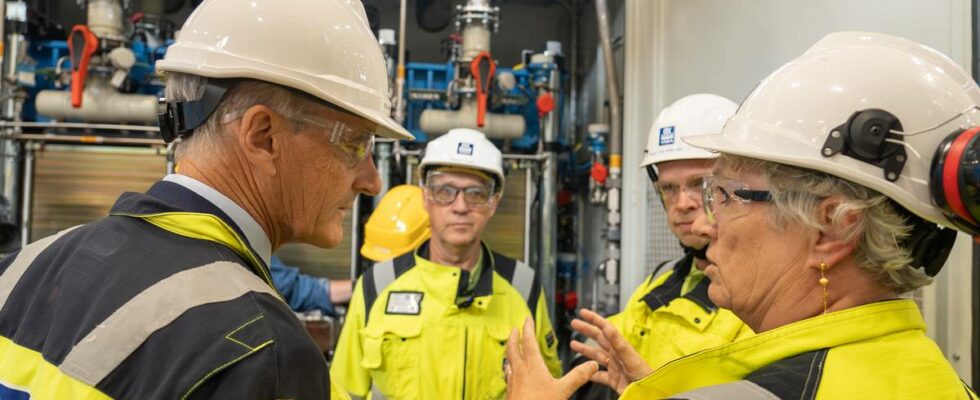The matter summarized Prime Minister Jonas Gahr Støre opened Yara’s new facility for renewable hydrogen production in Porsgrunn. Yara is among the largest emission sources of CO₂ in Norway. The plant, which is Europe’s largest of its kind, will help cut 40,000 tonnes of CO₂ a year when fully operational. Yara has already reduced emissions by 60 per cent from 2005 until now, while production has increased by 22 per cent. The government will require companies with large energy consumption to map their energy use, and is submitting a proposal for regulations on requirements for regular energy mapping for consultation. Støre emphasized the need for more power production, both to make hydrogen on Herøya and for other industrial plans in Norway. Yara is continuously working to cut even more emissions and become more energy efficient, both at the company in Porsgrunn and in the entire system globally. The summary is made by an AI service from OpenAi. The content has been reviewed by news’s journalists before publication. – Yara is one of our prides in the industry. They are now leading the way in producing ammonia with hydrogen and are helping to cut CO2 emissions. This is an example of cutting emissions and creating jobs. This is what Prime Minister Jonas Gahr Støre (Ap) said when he opened the new plant that will produce so-called green hydrogen on Monday. The facility will be Europe’s largest of its kind. In the new facility, there are, among other things, electrolysis tubes that create hydrogen. Photo: Lars Tore Endresen / news – We reach a new milestone At the turn of the year in 2022, news could report that the fertilizer producer at Herøya in Porsgrunn is one of the largest emission points for land-based companies in Norway. CEO Svein Tore Holsether at Yara says they are already well underway in cutting emissions. CEO Svein Tore Holsether in Yara believes in further CO2 cuts. Photo: Lars Tore Endresen / news – We have already reduced emissions by 60 per cent from 2005 until now. In addition, we have increased production by 22 per cent. Today we are taking another step and reaching a new milestone. The renewable hydrogen, which is produced in the new plant on Herøya, is the raw material for ammonia production, which is further refined into, for example, fertilizer. Want to map energy use On Monday, news also came that the government will order companies with large energy consumption to map their energy use. – Many industrial companies with high electricity consumption have great energy efficiency potential. It is then important that when they get that knowledge, they actually also implement measures and investments for it, says Energy Minister Terje Lien Aasland (Ap). With the new plant, Yara can cut 40,000 tonnes of CO₂ a year at full operation. The CEO emphasizes that they are continuously working to cut even more. – We work on improvements every single day. Both at our company in Porsgrunn, but also our entire system globally, we are looking at what we can do to become more energy efficient, says Holsether. – Need for more power The government wants the enterprises that use the most energy to have a particular focus on using energy in the most efficient way possible. The proposal for regulations on requirements for regular energy surveys is now being submitted for consultation. – The government is working along several tracks to get more power in place in the years leading up to 2030, and energy efficiency is a central part of this initiative. We have clear expectations that those who use the most energy take particular responsibility, says the energy minister. Prime Minister Jonas Gahr Støre emphasized the need for more power production. Photo: Lars Tore Endresen / news The Prime Minister also believes that the government’s proposal on energy mapping will yield results in the long term. Støre is clear that there is a great need for more power production. – Both because power is needed to make hydrogen on Herøya, but also because many of the other industrial plans we have in Norway depend on us being able to develop more power. It can come from wind on land and at sea, but also from the sun and other sources. Published 10.06.2024, at 20.12
ttn-69
Støre praises emissions reduction – Yara will cut 40,000 tonnes of CO₂ – news Vestfold and Telemark – Local news, TV and radio

